Morocco
Morocco: Marching to a different beat
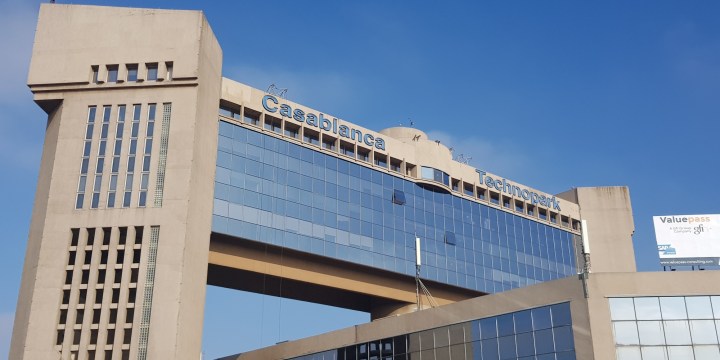
Casablanca is just a four-hour flight from Lagos. But it’s a world away.
Instead of paralysing traffic, we move quickly on a multi-lane highway towards Rabat, not a pothole in sight. Instead of sprawling tin and wooden slums, the expressway is dotted with cranes atop new multistorey housing settlements stretching out towards the horizon. Instead of yellow Lagosian danfo taxis clustered at informal stops hindering the flow, Morocco’s roadside amenities and its péage would not be out of place in Europe; neither Casablanca’s surly immigration officers.
As you leave the city instead of bush and mounds of garbage there are ploughed fields, acres of which are under a different sort of plastic, greenhouses producing for Europe’s tables just 14km away across the Gibraltar Strait from Tangier. For a while the 350km road from Casablanca to Tangier hugs the TGV rail line opened in November 2018 after 10 years of planning and construction, cutting the journey to a fuss-free two hours.
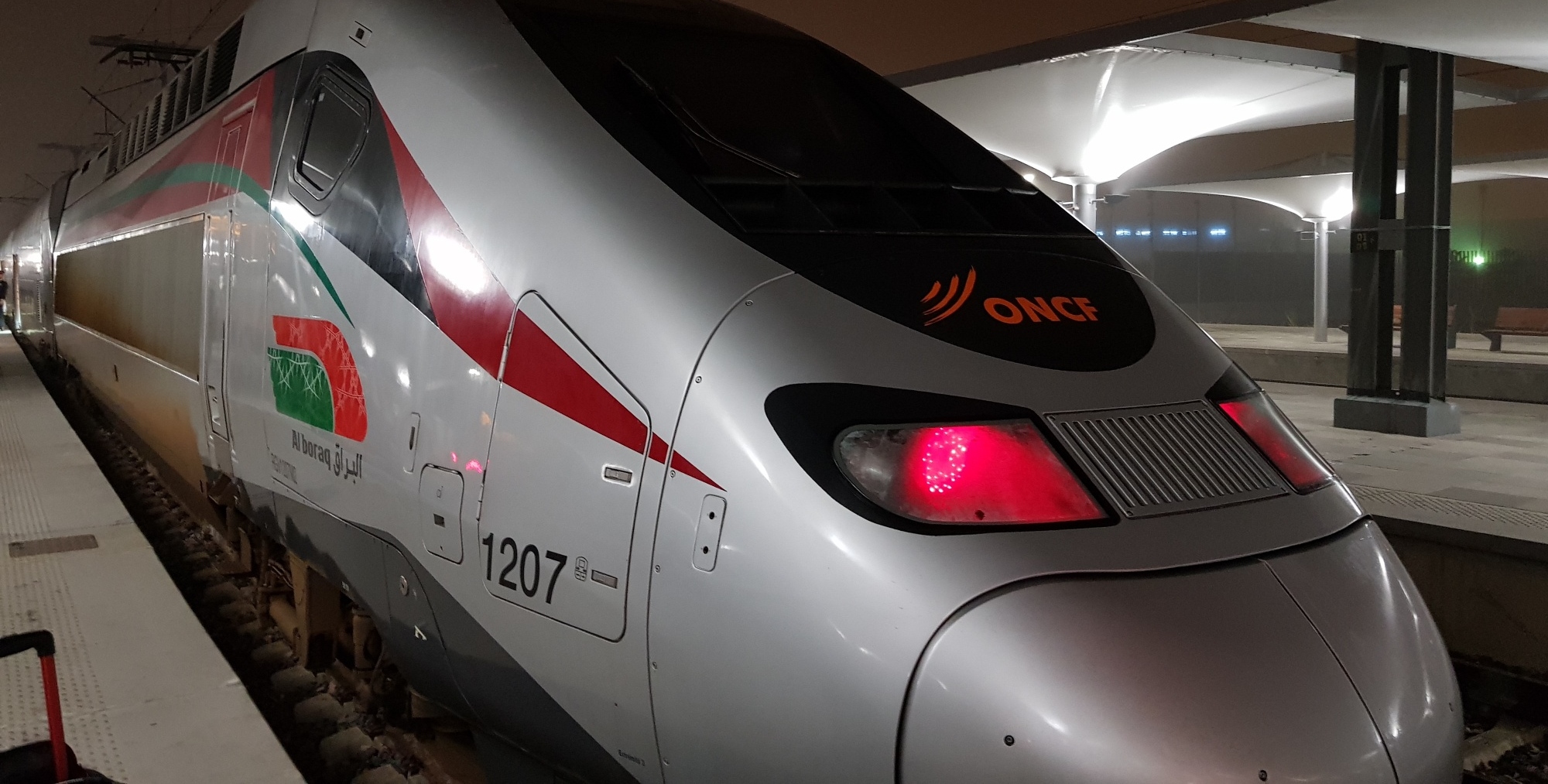
Morocco’s $2 billion TGV — Al Boraq – was financed by loans of a billion dollars from France, and another half-billion from Gulf states. (Image supplied)
Traditions remain. Women in jellaba and men in Obi-Wan Kenobi-style pointy-hatted amama tend sheep on the verges of the motorway. And neither is it perfect. Poverty levels remain high in rural areas. Four million of Morocco’s 36-million today live near or in poverty, three-quarters of them in the rural areas.
Tangier is at the epicentre of this merging of European modernity and Berber tradition, which has so far worked to Morocco’s advantage, the economy touching 5% growth for nearly 15 years, driven by foreign investors and they, in turn, by a carefully-sweated combination of policy, stability and infrastructure.
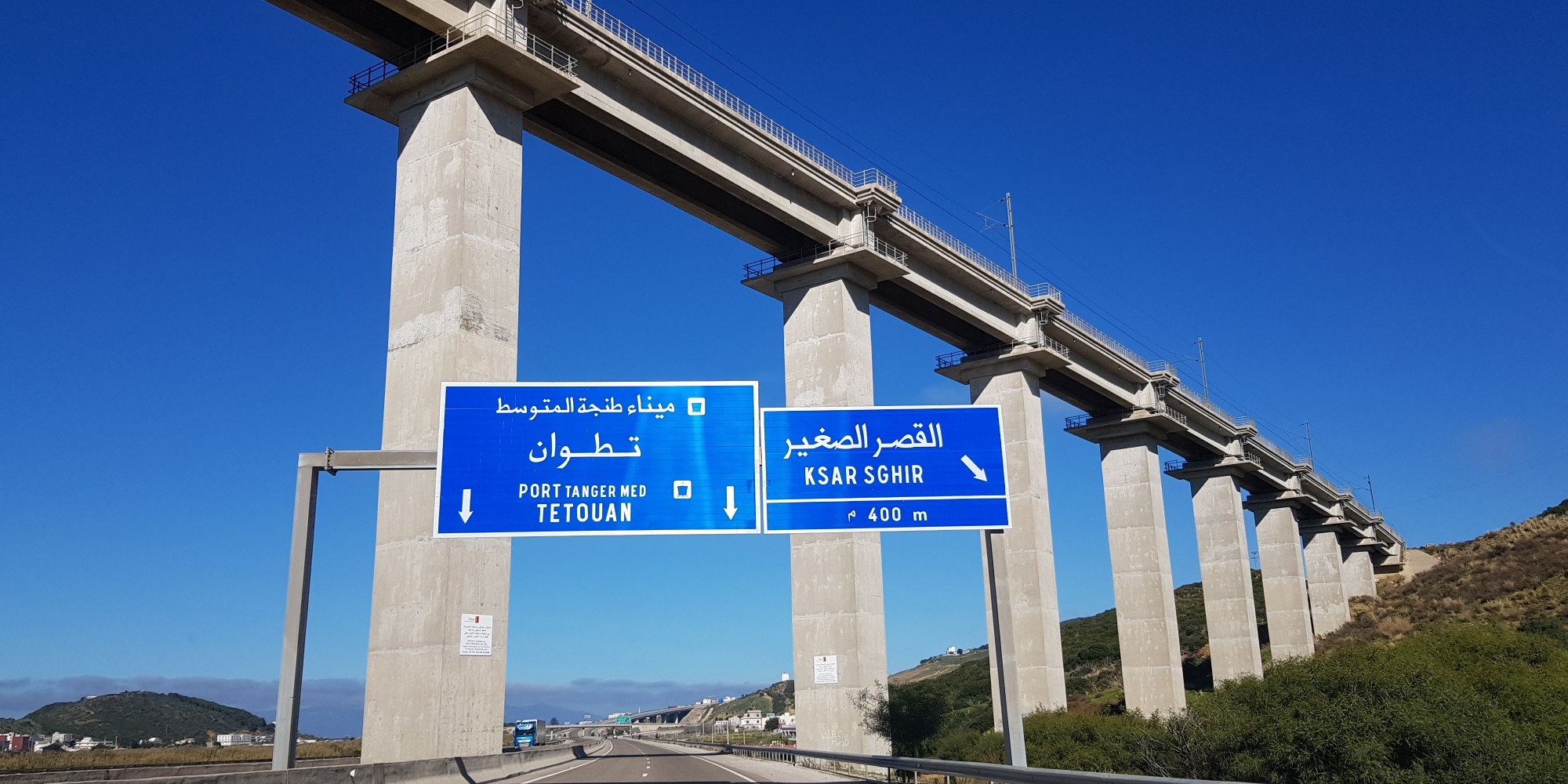
Tangier Med is connected to the city by a brand new expressway. (Image supplied)
Tangier’s modernisation has hinged around the development of a new port, known as Tangier Med, three “free zones” (the original Tangier Free Zone opened in 2000, Renault Tangier Med, and Tangier Automotive City), and two industrial parks at Tetouan. With $8-billion in investment to date, together these employ 80,000 with $7-billion in turnover, making this the largest free zone in Africa.
To these developments has been added a 45,000-seat sports stadium in the centre of the city, an expanded new business district, and renovated tourist infrastructure.
Once famed for its tangerine production, today Tangier is better known for its sweet Renaults. In 2018 the kingdom produced 430,000 passenger vehicles, second only on the continent to South Africa, which produced 600,000. Nearly all are exported to Europe from Tangier Med. The 300-hectare Tangier plant employed 6,700 workers and produced 318,600 cars in 2018, making it the third largest Renault plant worldwide. With a significant on-site government training centre, great pride is taken in the upskilling of the workforce.
Peugeot too will soon open a factory in the free zone in Kenitra, with a capacity of 300,000 units per annum and 200,000 drive-trains. But the value also comes from the associated automotive component manufacturers, including the likes of Magnetti Marelli, Federal Mogul, Hands and Valeo. None are household names, but nine of the largest 15 auto parts firms worldwide are represented in Tangier.
Morocco is leveraging its main comparative advantages: Location, stability and wages. The minimum wage is $300 per month, compared to $338 in Tunisia, $430 in Turkey, and nearly 10 more in nearby Spain, though companies have come to Morocco not just because of cheap but also the availability of skilled labour. Incentives play their part, too, with government subsidies of as much as $6,000 a year per person for training in higher-tech areas. Up to 15% of the total investment amount can be met through subsidies through the Hassan II Fund. There are also tax exemptions, including zero percent corporate tax during the first five years and then a reduced rate of 8.75% for the next 25 years; and VAT and customs exemption along with the tax-free repatriation of foreign earnings.
Construction on Tanger Med, 40km north-east of the city, began in 2003, opening four years later. Today it handles 3.5 million (twenty-foot equivalent unit, or TEU) containers, the export or transhipment of 500,000 new cars, three million passengers (mostly to Spain and France), and the movement of 300,000 trucks, ranking it the 45th largest container port worldwide, and the busiest in Africa. Port Said is next in the African rankings in the 52nd position with 3 million containers, Durban 65th (down from 51st in 2017) with 2.7 million and Mombasa 114th (previously 112th) with 1.2 million. With the second phase of the port opening later this year, it aims to be at 10 million TEUs within eight to 10 years.
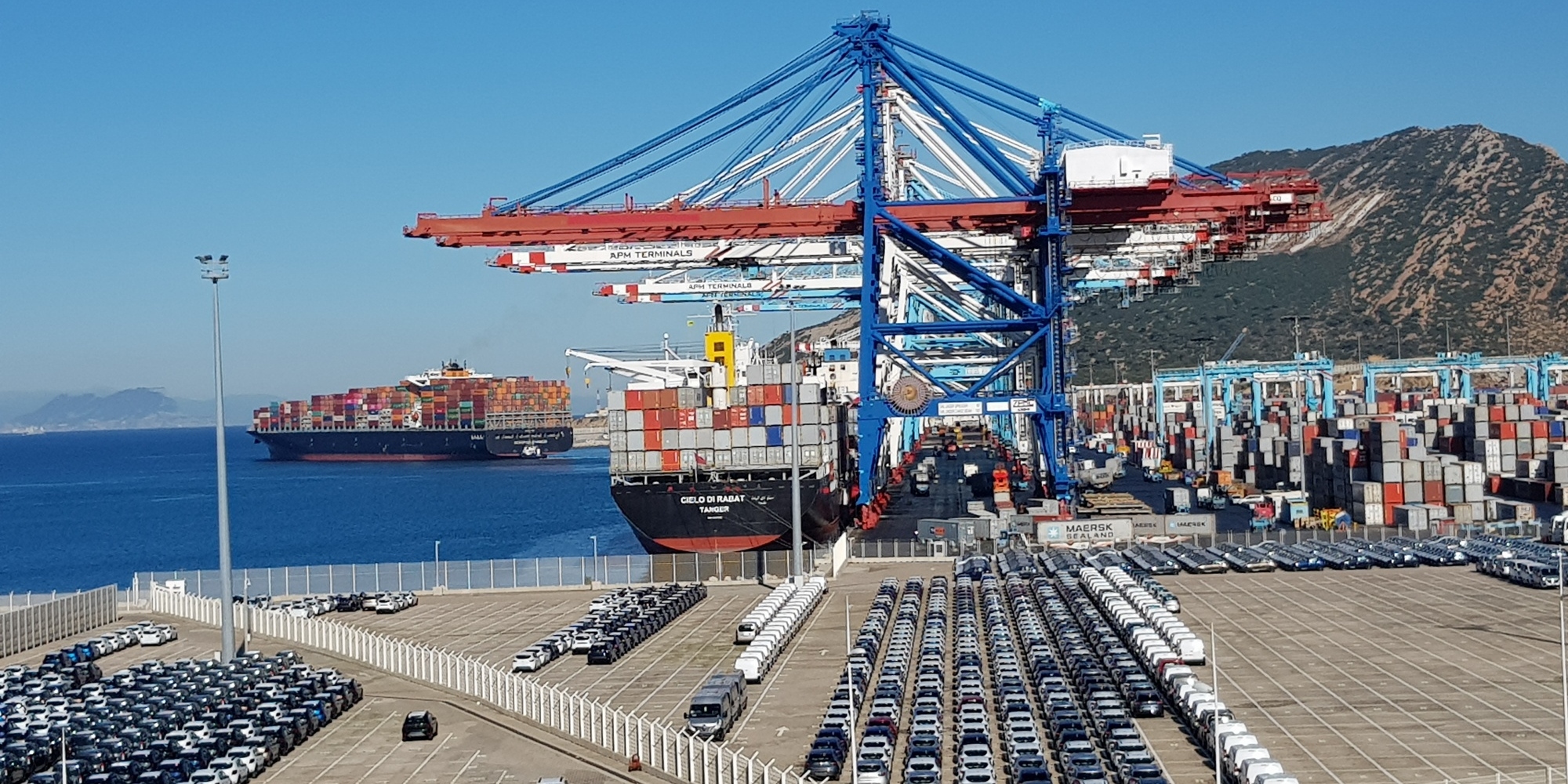
The first stage of Tangier Med, has seen the flow of TEUs at 3.5m in 2018, which will increase potentially threefold by the second phase expansion, below. (Image supplied)
It’s a slick, hi-tech operation, handling an average of 38 ships per day, connecting to 188 ports in 80 countries. And it’s a showcase for Public-Private partnerships, much talked about in Africa but much less carried out.
Tangier Med is the result of $4-billion of public investment concentrated on the port, purchase of the land, and the construction of 50km of an expressway. The private sector added “everything on top” says Rachid Houari, director of the port, including cranes, factories, and warehousing. There are three private container port operators with 25-year concessions and one each for hydrocarbon and car operations.
Although much of the traffic today is transhipment, the concept of Tangier Med was unlike any other major port.
“We had ambitions to be the most modern port in Africa but also to make the best use of our excellent geographic position,” he says, with the rock of Gibraltar clearly visible over his shoulder on a clear day, “to attract big factories. The Dubai model is mostly about logistics, not manufacturing. I suppose we would like,” he smiles, “to look like Rotterdam in terms of container handling, Dubai in terms of logistics, and Singapore in terms of industry.”
Vision is important, but political stability and predictability play a key part. Because of this, “We were able to leverage,” notes Houari, who received his post-graduate education at Southampton University, famed for its naval engineering excellence, “Morocco’s reputation as a safe, stable country where you can do business in a predictable way.”
And there is one additional, related and crucial advantage. Morocco has free trade agreements in place with the European Union, the United States, and Gulf countries among others, representing 1.6 billion people and 60% of global GDP.
In an era where globalisation seems to be on the retreat, Morocco has made access to richer markets a core foreign policy ambition.
But openness is nothing new to the city. In some respects, it’s a case of back to the future.
As an international protectorate from 1923 until Morocco’s independence in 1956, Tangier was always open, both to trade, the free use of currencies and as a counter-cultural icon. It became a nub for hedonistic experimentation, in writing as in drugs and openly gay lives, the setting for William Burroughs’ Naked Lunch and long-time resident Paul Bowles’ The Sheltering Sky. As Burroughs put it:
“Tangier is one of the few places left in the world where, so long as you don’t proceed to robbery, violence, or some form of crude, antisocial behaviour, you can do exactly what you want.”
He certainly did in delving into heroin, morphine, majoun and various opioids.
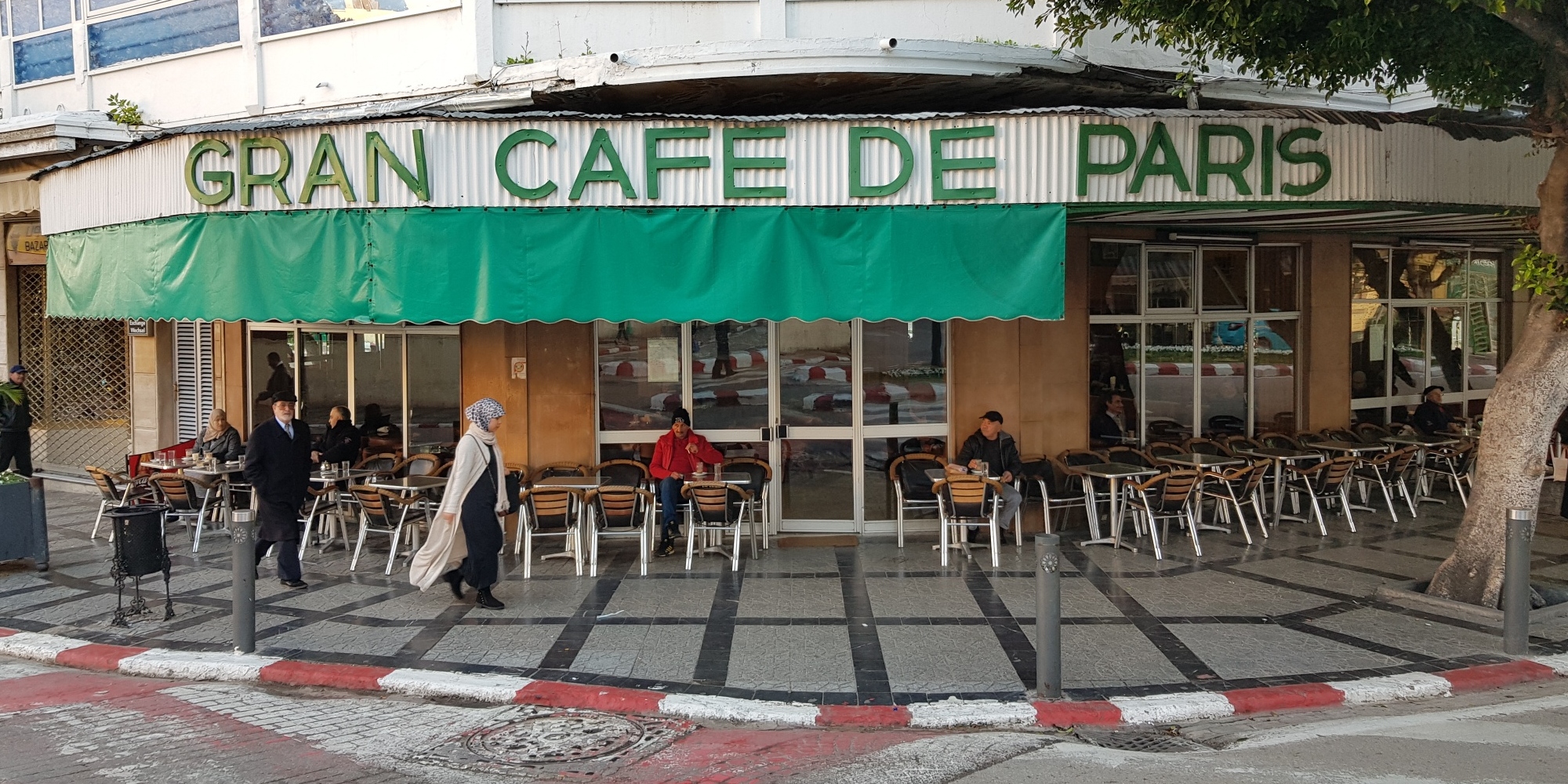
Naked Lunches, Sheltering Cafes and the odd Interzone: Ghosts of Bowles and Burroughs are chased by tourists in search of the ‘old’ Tangier. Image supplied.
Opposite the French mission, the corrugated façade of the Cafe de Paris, supposedly the haunt of Burroughs, Bowles, Jack Kerouac, Alan Ginsberg and disciples of the Beat generation, offers a clear 180-degree vantage of the passing traffic through its floor length windows. Sad-faced inevitably moustachioed red-jacketed waiters mill their way through the heavy brown leather chairs serving coffee and the occasional croissant, just as they might have done 60 years ago. Nearby, the Grand Cafe in the old medina’s Petit Socco with its fin–de-siècle facades, offers similar people-watching opportunities, with shop vendors hassling tourists in hustling all manner of tat, from fezzes to fridge magnets.
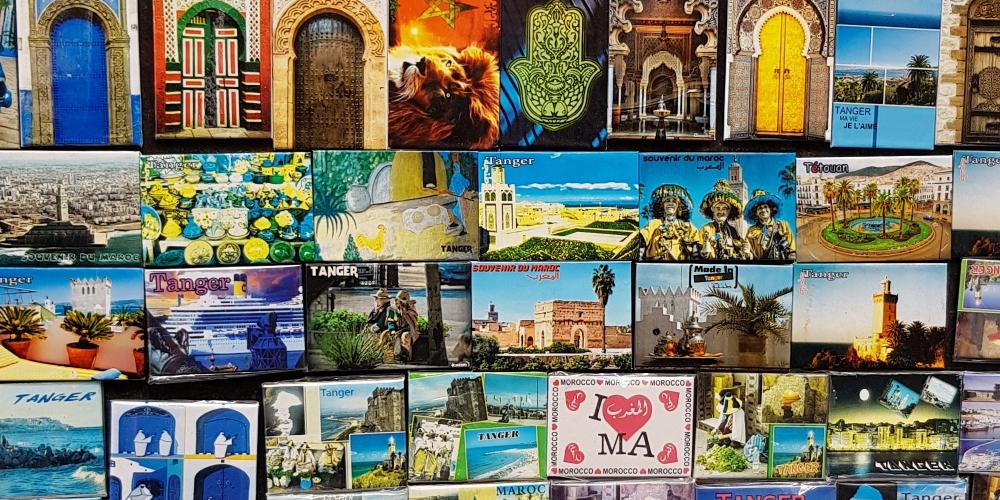
Image supplied.
Bowles described Tangier as “rich in prototypal dream scenes: covered streets like corridors with doors opening into rooms on each side, hidden terraces high above the sea, streets consisting only of steps, dark impasses, small squares built on sloping terrain so that they looked like ballet sets designed in false perspective, with alleys leading off in several directions; as well as the classical dream equipment of tunnels, ramparts, ruins, dungeons and cliffs”.
That’s the Tangier portrayed more recently in The Bourne Ultimatum, and the gripping fight-to-the-death between the eponymous star and itinerant hitman Desh. It’s a cameo of high- speed chases through narrow, cobbled medina lanes, up stairwells, along narrow streets and ramparts, over flat-topped roofs dodging satellite dishes, jumping over streets, through windows and, finally, into a small bathroom where the grim fight is concluded with one winner. There are no Desh sequels.
Four other free zones are run by the government agency MEDZ: The aerospace hub at Midparc in Casablanca which employs 2,400 in 16 companies, the above mentioned automotive zone at Kenitra on the Atlantic, and those at Oudja and in Salé alongside the capital Rabat. Each of these is fed, like Tangier, by an ecosystem of incubators developing implementable ides, local financing, and connections with business. There are more than 70,000 workers at MEDZ-run free zones and industrial parks countrywide.
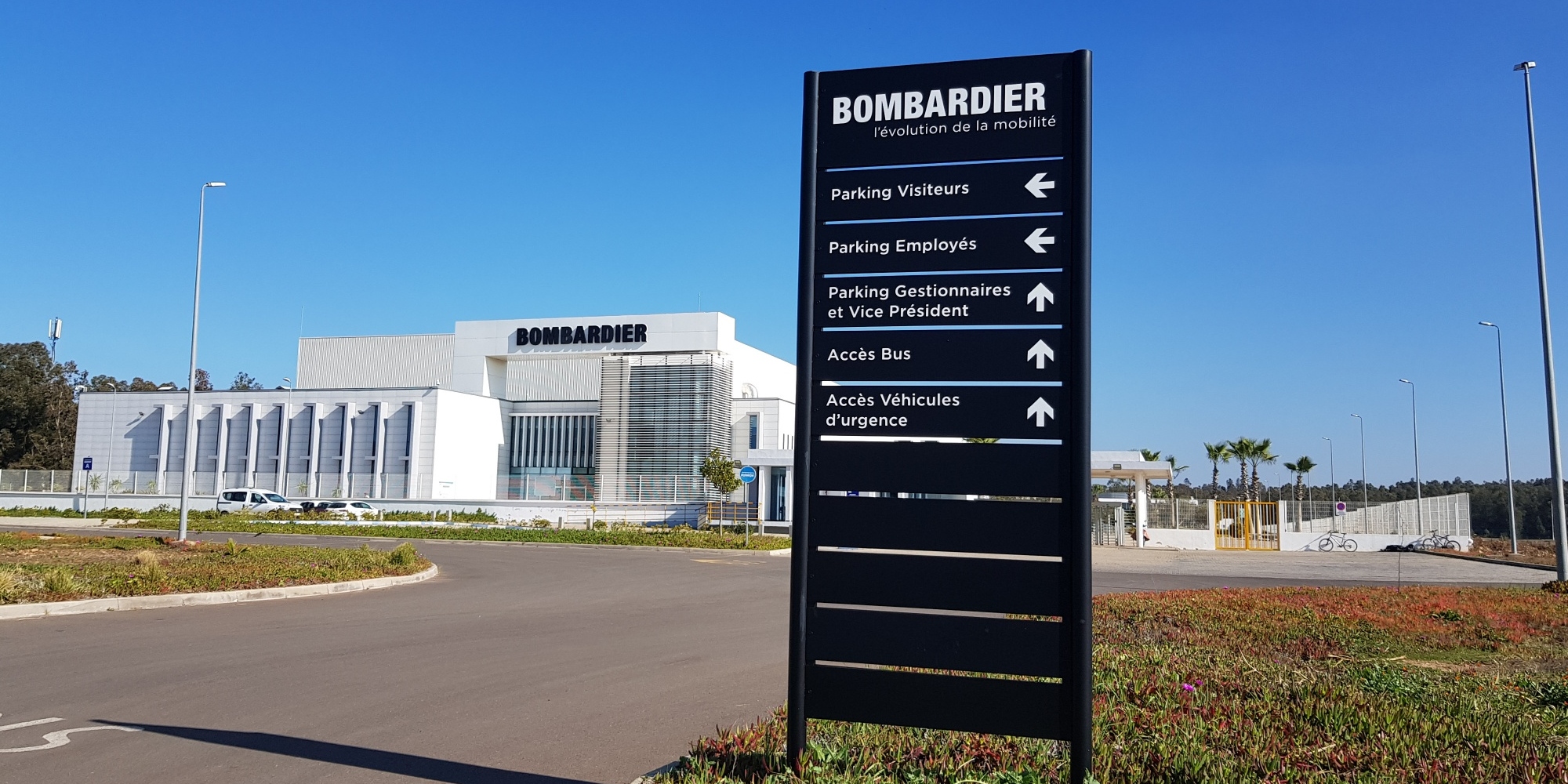
The seven free zones countrywide are interspersed with industrial parks and feeder incubators. (Image supplied)
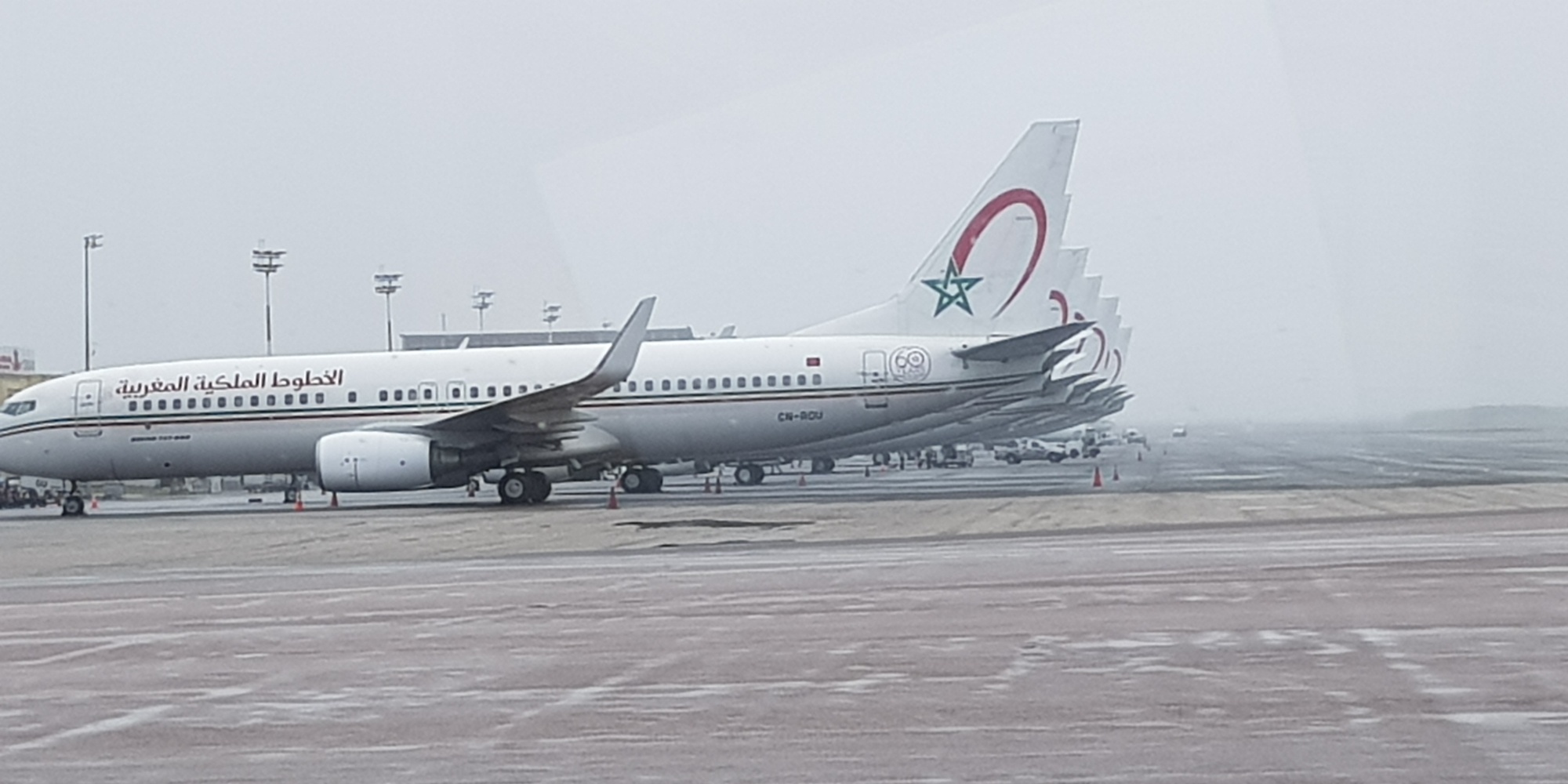
Royal Air Maroc, which is fully owned by the government of Morocco, carried 7.3 million passengers in 2017 (Image supplied)
The aerospace sector is expected to receive a boost with the relationship between Royal Air Maroc and Boeing, and that in turn by an expansion in the national carrier’s routes, flying to 13 European countries (including 11 cities in France), 24 in Africa, three in the Americas and two in the Middle East.
Call centres have also recently grown rapidly due, in particular, to Moroccan costs and proficiency in French. Now more than 20,000 work in this sector.
There some academic debate, notes Medz’s Mustapha Abir, about whether “the expenditure of tax revenue in subsidies is equal to the value of the jobs created and technology transferred”. But this argument presumes there is a better scheme available to create jobs. It also, as he notes, does not factor in the value of knowledge and skills transfer to Moroccans, without which they would exist on the periphery of the global economy.
Morocco is not without its challenges. At independence, the population was 10.5 million. Sixty years later it has more than tripled. But this trend is flattening, population growth falling from a high of 3.3% per annum in the late-1950s to 1.4% in 2016. Urbanisation has been rapid. At independence 29% of the population lived in cities, now it’s more than double that. Tangier’s population has swelled six-fold to over 1.5 million in the last 35 years. With a need to create jobs for 200,000 graduates every year, the pressure is on not just to plan, but to do.
There is little alternative but to forge ahead on job creation, lessons that the rest of Africa would be wise to heed, as it faces a doubling of its population over the next generation.
“Africa needs to average 7% economic growth each year until 2050,” observes Mouhcine Jazouli, the kingdom’s Minister for Africa, “if it is to keep pace with population growth and achieve income growth.”
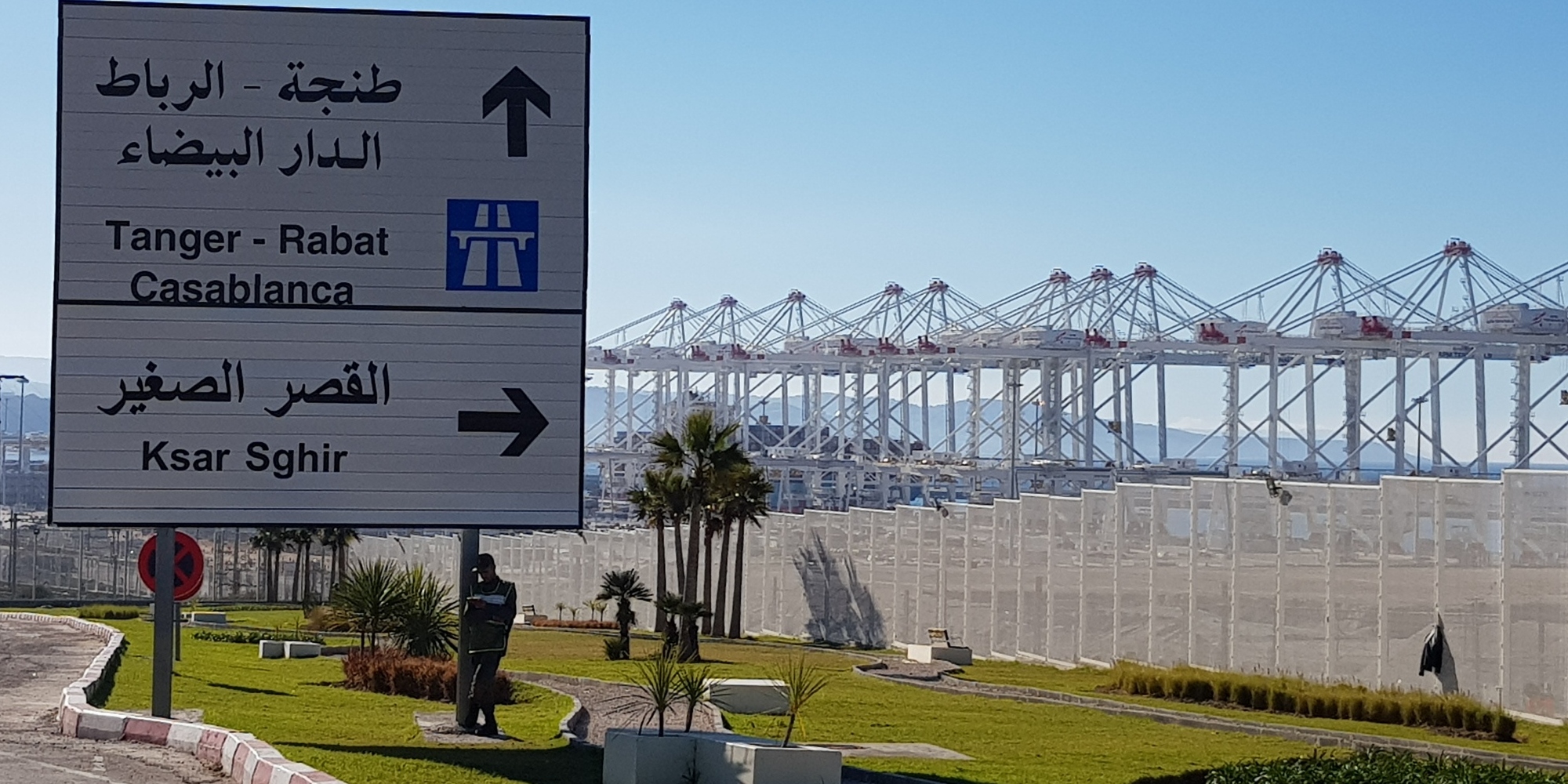
The second phase of Tangier Med. (Image supplied)
Another lesson from Morocco is that credibility with investors does not come from speeches or good intentions.
“It comes from doing things on time, from sticking to our commitments,” reflects Rachid Houari, “from doing what we say.”
He sees himself as a “facilitator” for business, acting to “undo any bureaucratic obstacles so that things move smoother and faster for the client”. Similarly, the Agence Spéciale Tanger Mediterranée was set up as a one-stop-shop for industrial investors, where ‘every authorisation necessary can be signed’ notes Sara Maatouk, one of its directors, like Houari also European educated.
Tangier is less hedonism, today, than hard yards and hard work.
During the week that I visited Tanger Med, President Cyril Ramaphosa appeared on television at Davos berating the continued imposition of sanctions on Zimbabwe. Colonialism and conspiracy ruled. Similarly, South Africa’s relations with Morocco have been handicapped by Pretoria’s preference to view them through the prism of Western Sahara. The ANC also remains doubtful about free trade, dubious about PPPs, and ambiguous about the value of the private sector.
Morocco, on the other hand, is living in the present and building for the future. DM
Dr Greg Mills heads the Brenthurst Foundation and is a co-author of the recently released Democracy Works: Rewiring Politics to Africa’s Advantage (Panmacmillan).


















 Become an Insider
Become an Insider